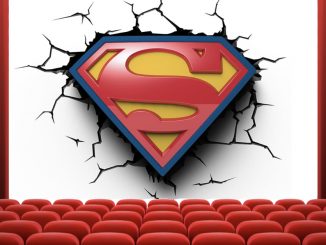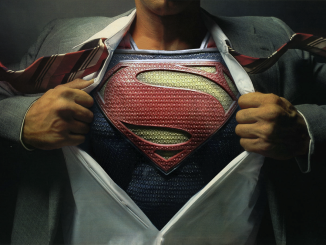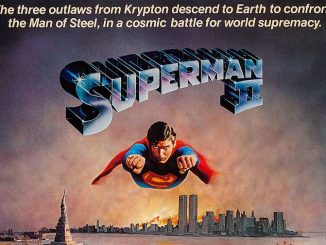A look back at Superman’s Cinematic Legacy
Fans unfamiliar with Superman’s cinematic history might be uncertain just how many movies the Man of Steel has appeared in. This article lists all the live-action films the character has appeared in.
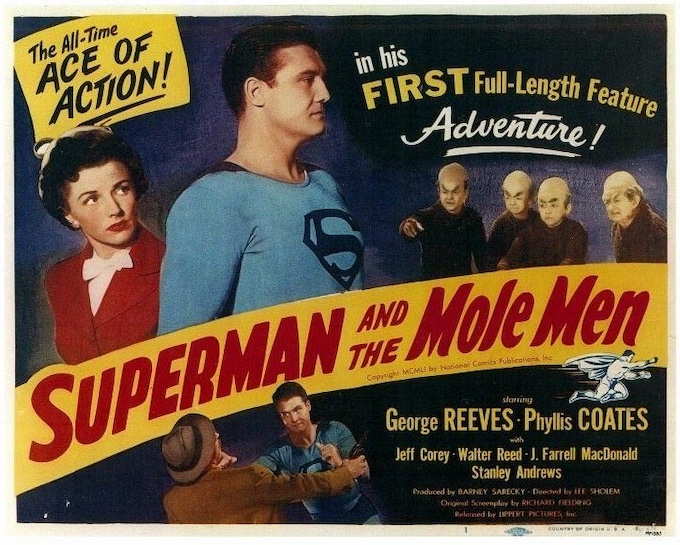
“Superman and the Mole Men” (1951)
“Superman and the Mole Men” opened in theaters in November of 1951 and proved quite successful. The movie was only 67 minutes long, but was a splendid combination of science fiction and heroics, giving George Reeves an opportunity to establish himself, and Superman. The story was really a social commentary. After a giant well had been dug deep into the earth, a subterranean race of small men came to the surface to stop the drilling. Their appearance scared the people in the local town and Superman arrived to quell their fears. The conflict between the people of the town and the Mole-Men basically looked at man’s intolerance, and inhumanity, of things that were “different” and asked for tolerance, a message far ahead of it’s time. “Superman and the Mole Men” was later edited into a two-part episode of the “Adventures of Superman” TV series, titled “The Unknown People”.
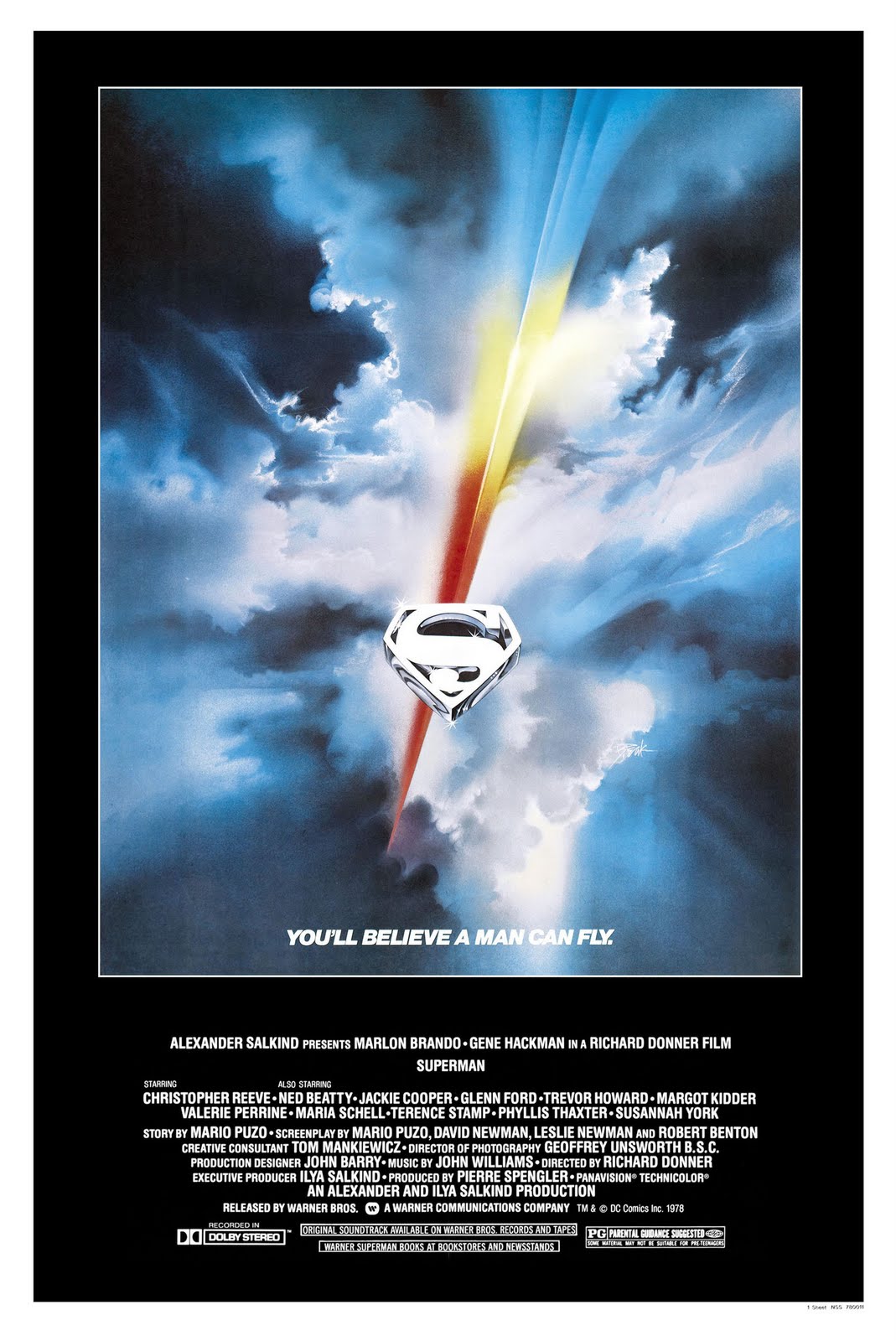
“Superman: The Movie” opened in theaters in December 1978 to huge fanfare. The movie ran 2 hours 43 minutes in its original theatrical version. Considered by many to still be the best superhero film of all time, “Superman: The Movie” was directed by Richard Donner. The film follows Superman from his origins on the distant planet Krypton to his life as Clark Kent in Smallville and ultimately as Superman in Metropolis. The film explores his journey of self-discovery, the development of his superpowers, and his decision to use them for the greater good. As Superman, he faces the nefarious villain Lex Luthor, who plans to use a pair of nuclear missiles to cause massive destruction. The film is known for its groundbreaking special effects, Christopher Reeve’s iconic portrayal of Superman, and its wonderful musical score by John Williams.
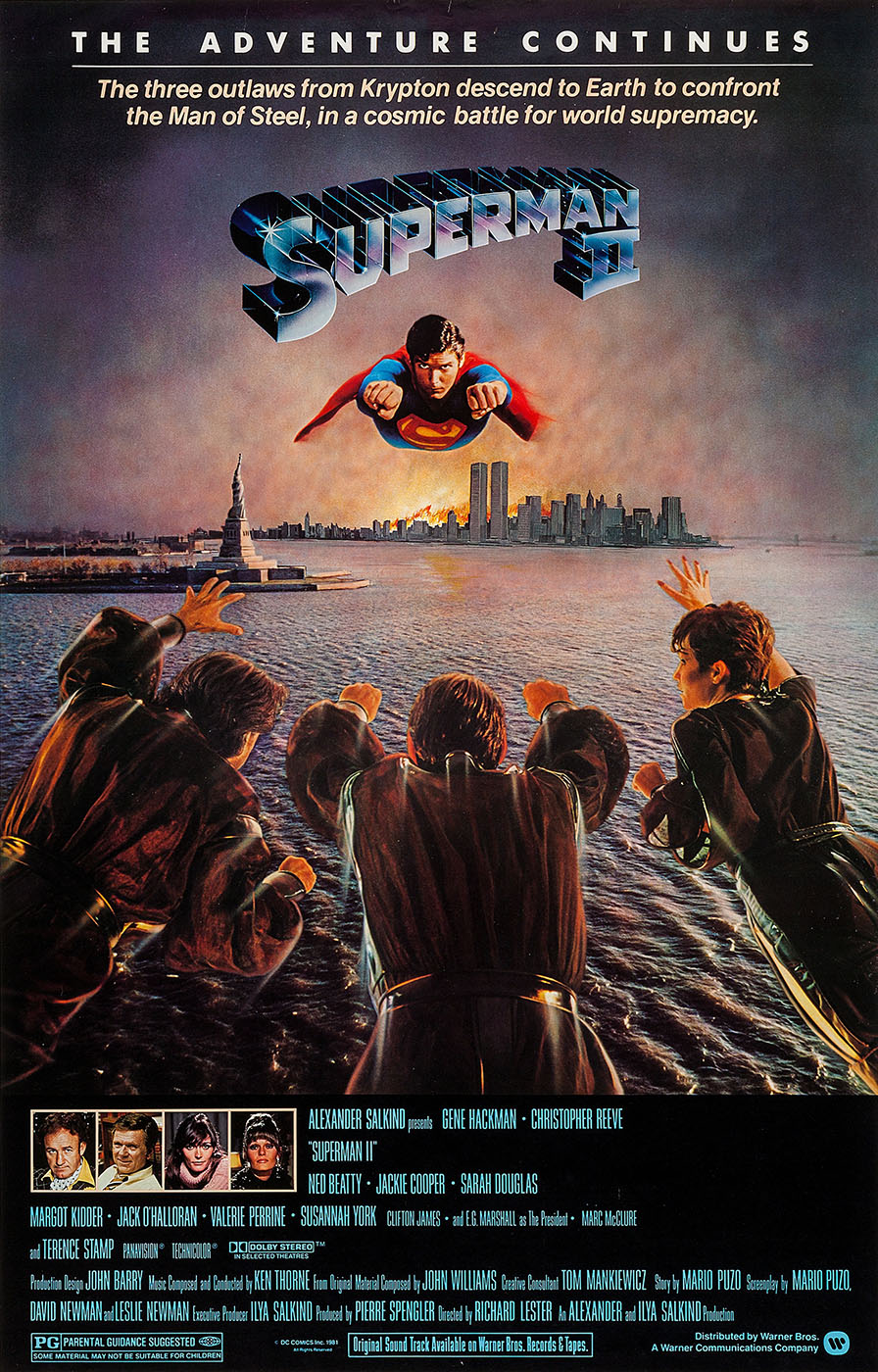
“Superman II” (1981), was directed by Richard Lester after Richard Donner was let go from the project. The story continues as Superman relinquishes his powers to live a normal life with Lois Lane. However, his decision is tested when a trio of Kryptonian criminals led by General Zod is freed from the Phantom Zone and wreaks havoc on Earth. With Superman depowered, Zod and his companions pose a significant threat, prompting him to face the dilemma of choosing between a normal life and his responsibilities as a hero. The film explores themes of sacrifice, love, and the consequences of choices. As the conflict intensifies, Superman must find a way to restore his powers and stop the villains from conquering the world.
“Superman II: The Richard Donner Cut” (2006)
In 2006 Warner Bros. released “Superman II: The Richard Donner Cut,” an alternate version of the 1981 film, incorporating Richard Donner’s original vision for the sequel, offering fans a unique glimpse into the director’s intended narrative with restored scenes and a different take on the iconic superhero story.
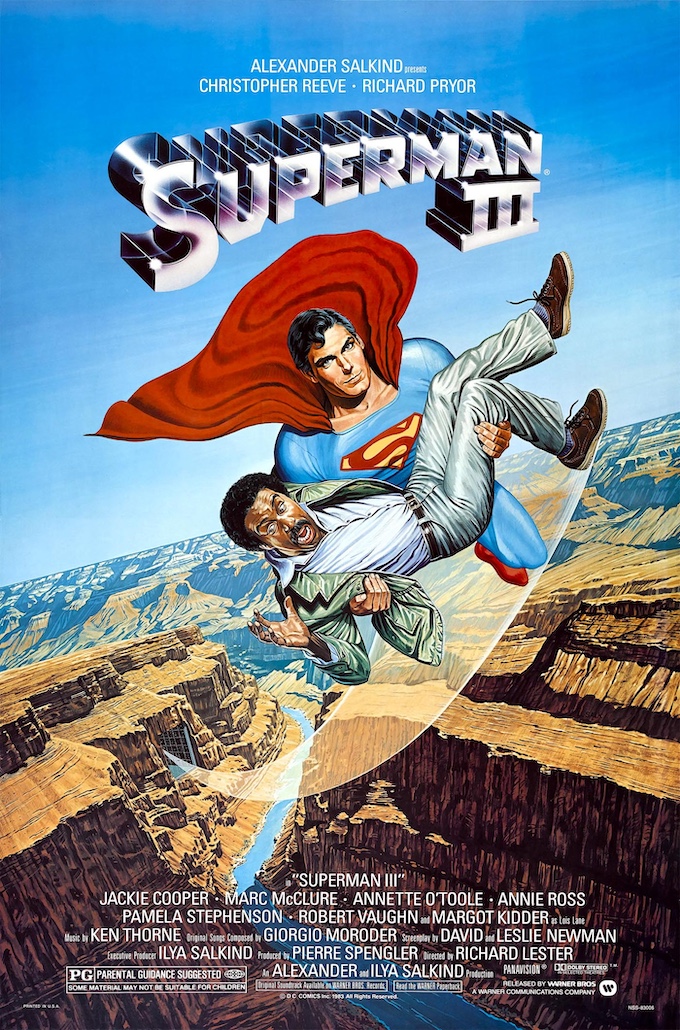
In “Superman III”, directed by Richard Lester, the storyline shifts towards a more comedic tone as Superman, once again played by Christopher Reeve, battles a new adversary in the form of billionaire Ross Webster (Robert Vaughn). The film sees the inadvertent creation of an evil Superman persona when the Man of Steel is exposed to synthetic Kryptonite. Meanwhile, Webster employs computer genius Gus Gorman, played by Richard Pryor, to assist in a scheme involving a supercomputer and financial manipulation. As Superman grapples with his internal conflict, the film explores themes of duality and the impact of technology on society.
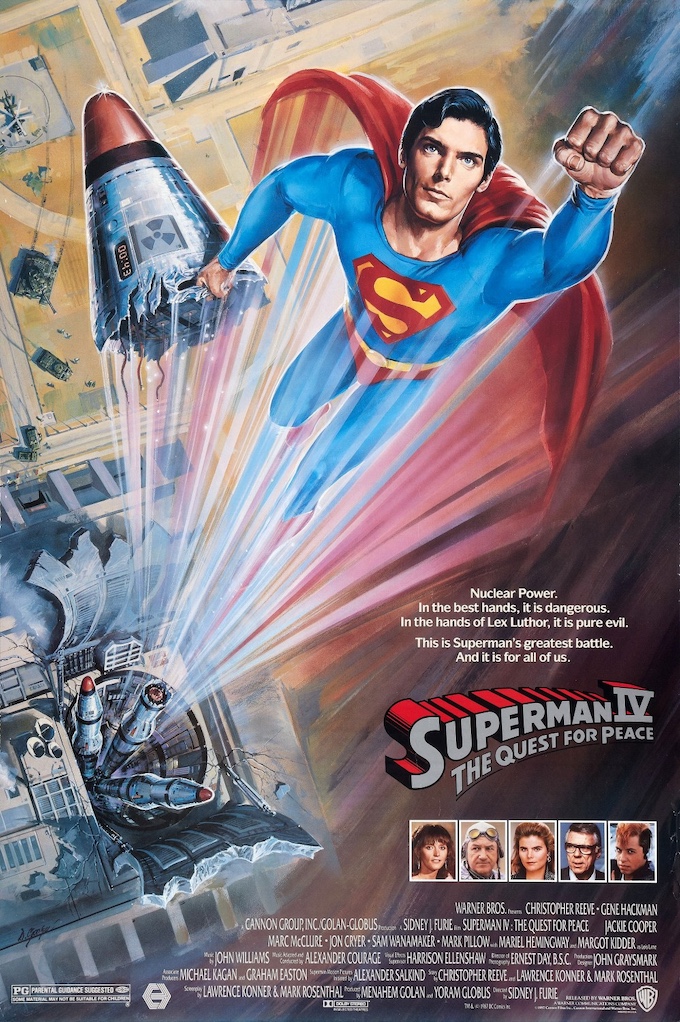
“Superman IV: The Quest for Peace” (1987)
“Superman IV: The Quest for Peace”, directed by Sidney J. Furie, follows Superman’s commitment to rid the world of nuclear weapons after a schoolboy’s plea. However, his actions inadvertently lead to the creation of Nuclear Man, a powerful adversary. As Superman faces this new threat, he also contends with the return of his old enemy Lex Luthor, who is determined to use Nuclear Man to conquer the world. The film explores themes of responsibility, power, and the consequences of meddling with global affairs. Despite its good intentions, “Superman IV” is often criticized for its lower production values and narrative shortcomings, marking a downturn in the franchise’s cinematic reception.
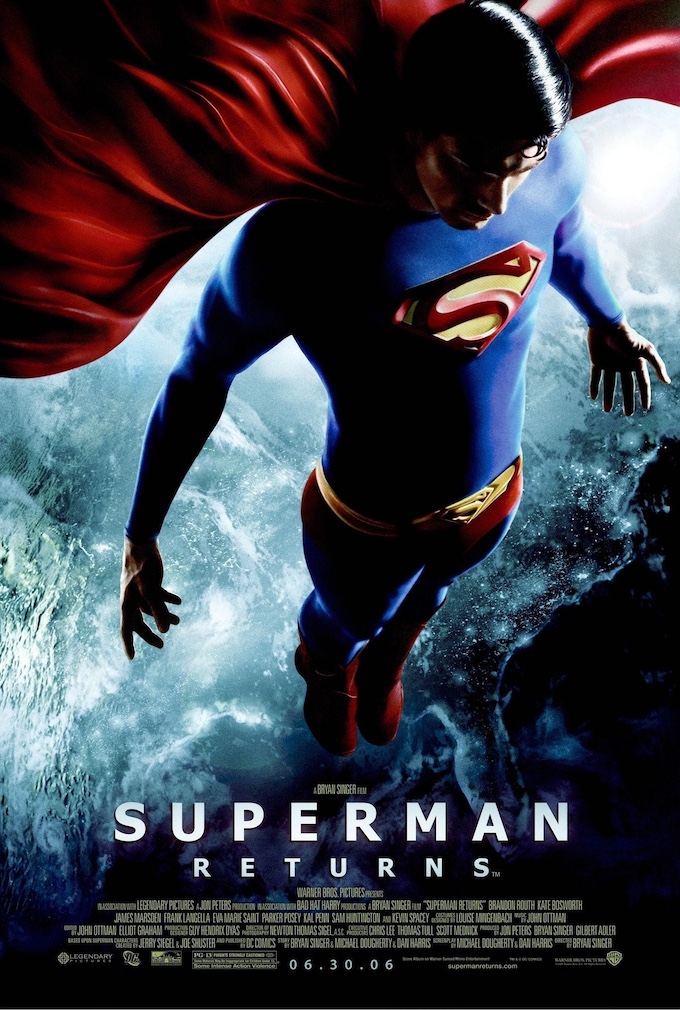
“Superman Returns”, directed by Bryan Singer, serves as a quasi-sequel to the original Superman film series, ignoring the events of “Superman III” and “Superman IV.” The movie follows Superman, played by Brandon Routh, as he returns to Earth after an absence of several years. He discovers that Lois Lane, portrayed by Kate Bosworth, has moved on with her life, and he must also confront the emergence of a new threat in the form of Lex Luthor, played by Kevin Spacey. Luthor’s diabolical plan involves using crystals from Krypton to create a new continent and reshape the world. The film combines elements of nostalgia with modern storytelling, exploring Superman’s existential struggles and the consequences of his choices. Despite receiving mixed reviews, “Superman Returns” is recognized for Routh’s homage to Christopher Reeve’s portrayal and its attempt to continue the legacy of the iconic superhero.
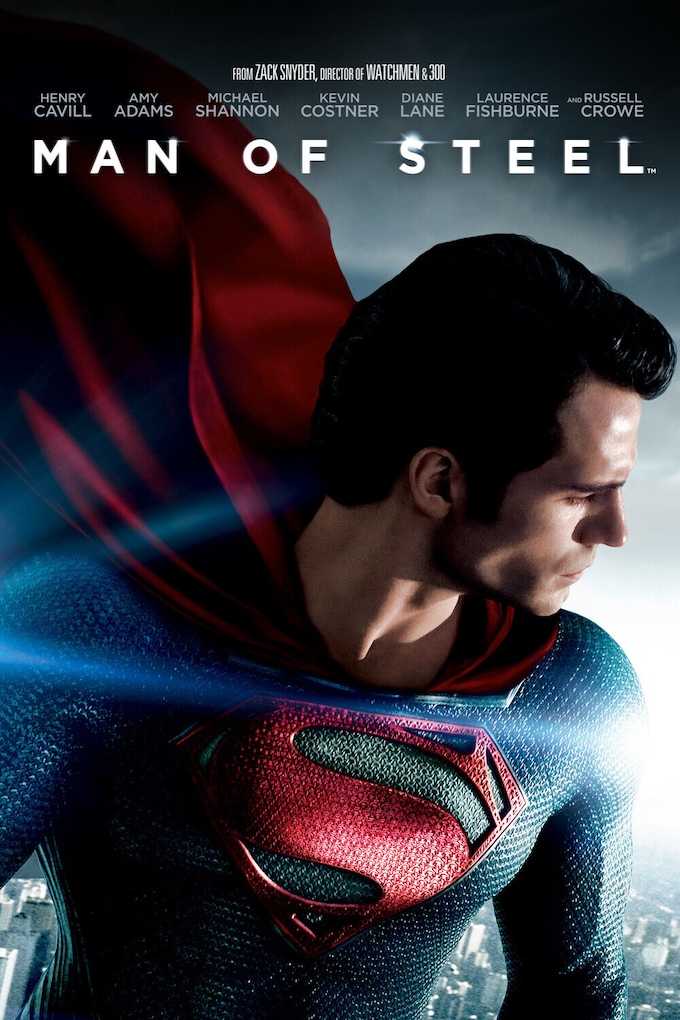
Directed by Zack Snyder, “Man of Steel” reboots the Superman film franchise, presenting a modern and darker interpretation of the iconic superhero’s origin story. The film follows the journey of Kal-El, played by Henry Cavill, from his birth on Krypton to his upbringing on Earth as Clark Kent. As he grapples with his extraordinary powers, Clark takes on the persona of Superman and faces the threat of General Zod, portrayed by Michael Shannon, who seeks to terraform Earth into a new Krypton. The film explores themes of identity, alienation, and the moral dilemmas Superman faces as he tries to protect humanity. “Man of Steel” received mixed critical reviews for its darker tone and extensive action sequences but is praised for its visual effects and Cavill’s performance as the titular character.
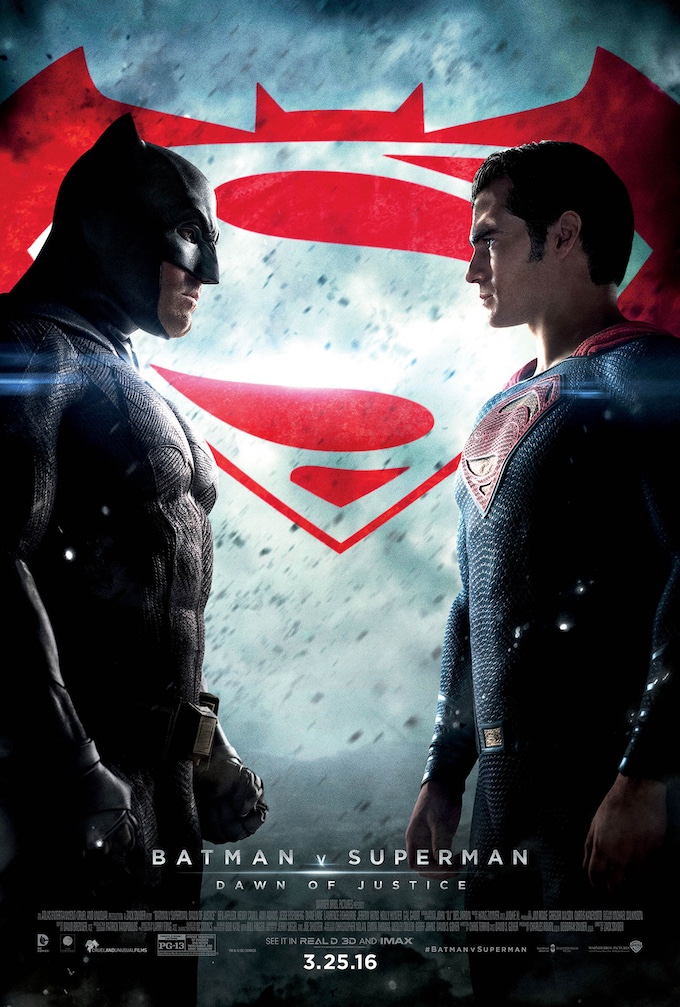
“Batman v Superman: Dawn of Justice” (2016)
“Batman v Superman: Dawn of Justice” is a direct sequel to “Man of Steel” and serves as the second installment in the DC Extended Universe. The film explores the consequences of Superman’s existence on Earth and the public’s perception of him as both a savior and a potential threat. The plot revolves around the conflict between Superman and Batman, portrayed by Ben Affleck, who sees Superman as a dangerous force that needs to be stopped. Meanwhile, Lex Luthor, played by Jesse Eisenberg, manipulates events to pit the two superheroes against each other. The film delves into themes of power, responsibility, and the nature of heroism, leading to the formation of the Justice League. Despite a divisive reception, the film is notable for its ambitious storytelling, visual spectacle, and the introduction of other DC Comics characters into the cinematic universe.
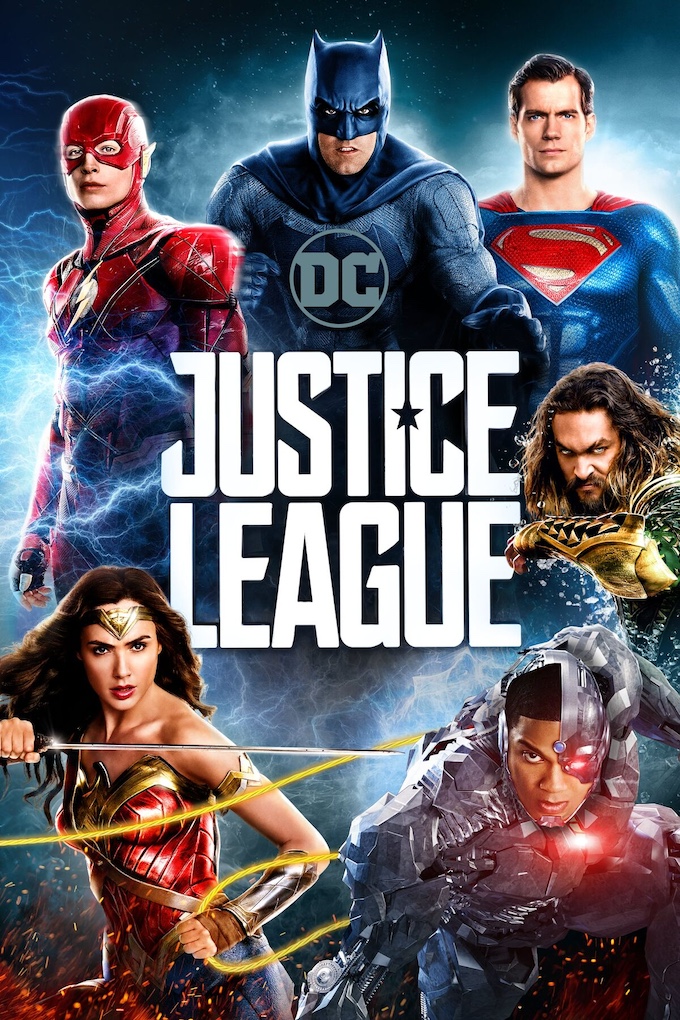
When director Zack Snyder had to step down for family reasons, Joss Whedon stepped in to complete post-production on the “Justice League” film, a superhero ensemble film that brings together iconic DC Comics characters, including Superman, Batman, Wonder Woman, The Flash, Aquaman, and Cyborg. The story centers on the heroes uniting to face the catastrophic threat of Steppenwolf, an ancient alien warlord seeking to conquer Earth using powerful Mother Boxes. The film explores the heroes’ individual struggles and their journey toward forming a cohesive team to save the world. “Justice League” received mixed reviews, with praise for its cast and action sequences but criticism for its inconsistent tone and uneven storytelling. Despite the mixed reception, the film is significant for assembling DC’s major superheroes in a shared cinematic universe.

“Zack Snyder’s Justice League” (2021)
Often referred to as the “Snyder Cut,” “Zack Snyder’s Justice League” is a director’s cut of the 2017 “Justice League” film. Directed by Zack Snyder, this version offers a more expansive and coherent narrative, with a runtime of over four hours. The film delves deeper into the backstories of individual Justice League members, such as Cyborg and The Flash, and provides a more detailed exploration of the threat posed by Steppenwolf and his master, Darkseid. Superman’s resurrection is handled differently, and the movie features the Martian Manhunter. The “Snyder Cut” received a more positive response from fans and critics than the theatrical release, with praise for its character development, visual style, and cohesive storytelling. The release of this extended version was a unique event in response to fan demand, demonstrating the impact of directorial vision on a film’s reception.
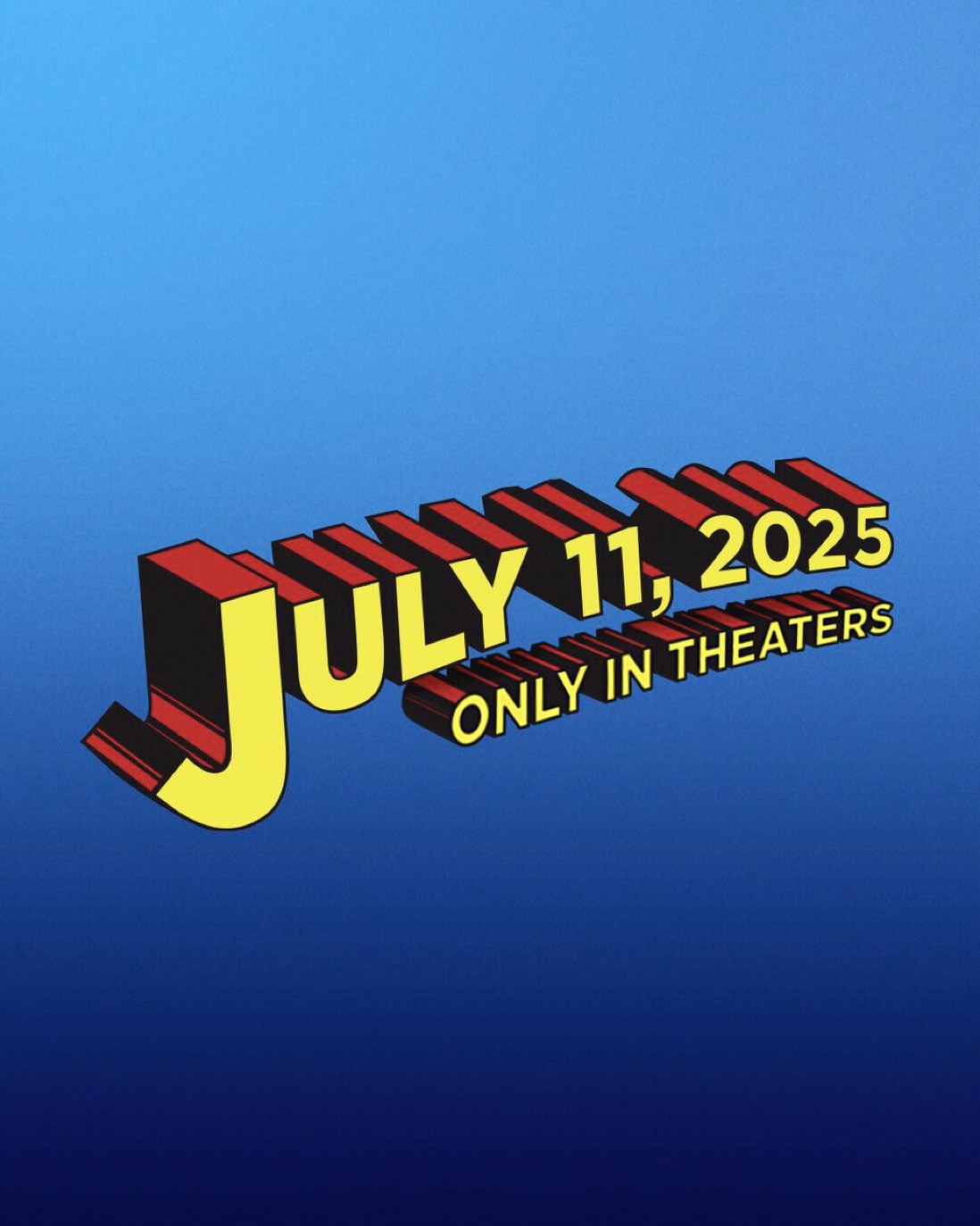
While details surrounding “Superman: Legacy” remain tightly under wraps, the movie is set to soar onto screens on July 11, 2025. The details we do have hint at a return to Superman’s core: reconciling his Kryptonian heritage with his human upbringing. This introspective lens on Clark Kent’s duality could lead to a deeply personal story, delving into themes of identity, belonging, and the ever-present responsibility that comes with immense power. With James Gunn at the helm, and David Corenswet starring as Superman/Clark Kent, “Superman: Legacy” has the potential to rekindle the Man of Steel’s cinematic flame, offering a Superman story that resonates with both die-hard fans and newcomers alike.
Worthy Mentions:
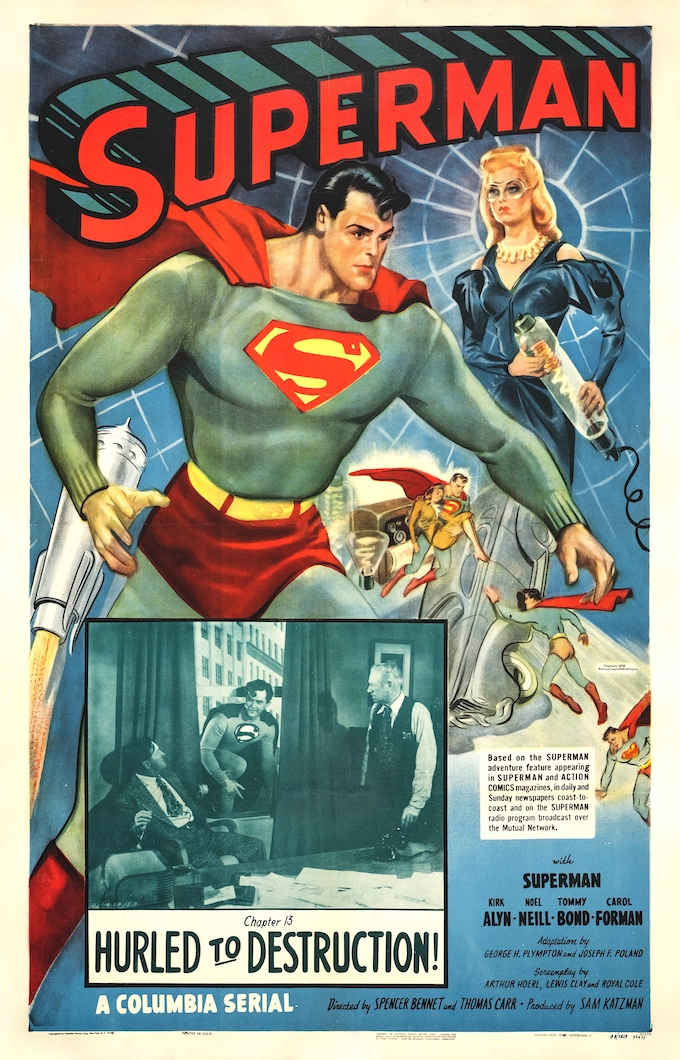
The “Superman” serial from 1948 is a 15-chapter cinematic adventure that follows the exploits of the iconic superhero as he battles the forces of evil. Starring Kirk Alyn as Superman/Clark Kent and Noel Neill as Lois Lane, the serial sees Superman taking on the villainous Spider Lady, who plans to use a powerful scientific device known as the ‘Reducer Ray’ for nefarious purposes. As Superman, Clark Kent must navigate various challenges, including deadly traps, explosions, and secret identities, to thwart the Spider Lady’s plans and ensure the safety of Metropolis. Filled with action-packed sequences and classic comic book elements, the serial captures the essence of Superman’s early adventures on the silver screen.
“Atom Man vs Superman” Serial (1950)
“Atom Man vs Superman” (1950) is a 15-chapter film serial that follows Superman’s quest to thwart the nefarious plans of Lex Luthor, who adopts the alias Atom Man. Luthor, seeking revenge for his previous defeat, employs a variety of ingenious schemes, including the creation of Kryptonite-powered weapons and devices. As Atom Man, Luthor poses a formidable challenge to Superman, putting both Metropolis and the world at risk. Throughout the serial, Superman must overcome numerous obstacles, including the emotional turmoil caused by his alter ego, Clark Kent, being accused of Atom Man’s crimes. The storyline unfolds with suspenseful cliffhangers at the end of each chapter, keeping audiences engaged in the thrilling battle between the Man of Steel and his cunning arch-nemesis.
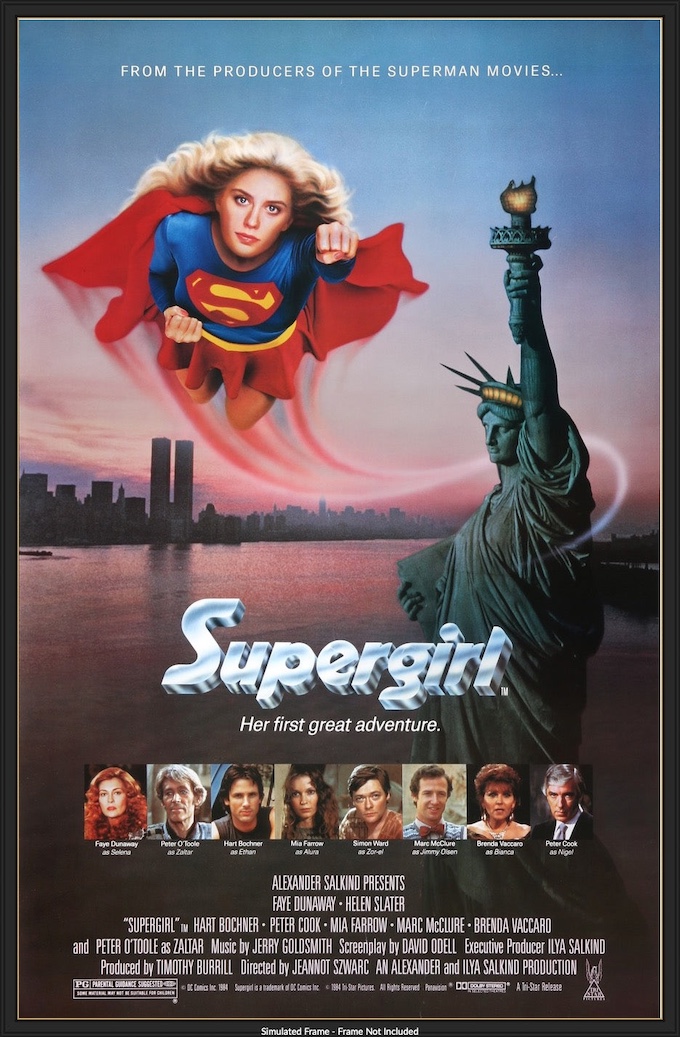
While Superman doesn’t directly appear in the “Supergirl” movie starring Helen Slater, the story is set in the same continuity as the Christopher Reeve Superman films, with the story focusing on Kara Zor-El, Superman’s Kryptonian cousin, who travels to Earth to retrieve a powerful artifact, the Omegahedron. Despite mixed reviews and commercial shortcomings, “Supergirl” remains notable for being one of the early superhero films featuring a female protagonist.
Cameo Appearances:
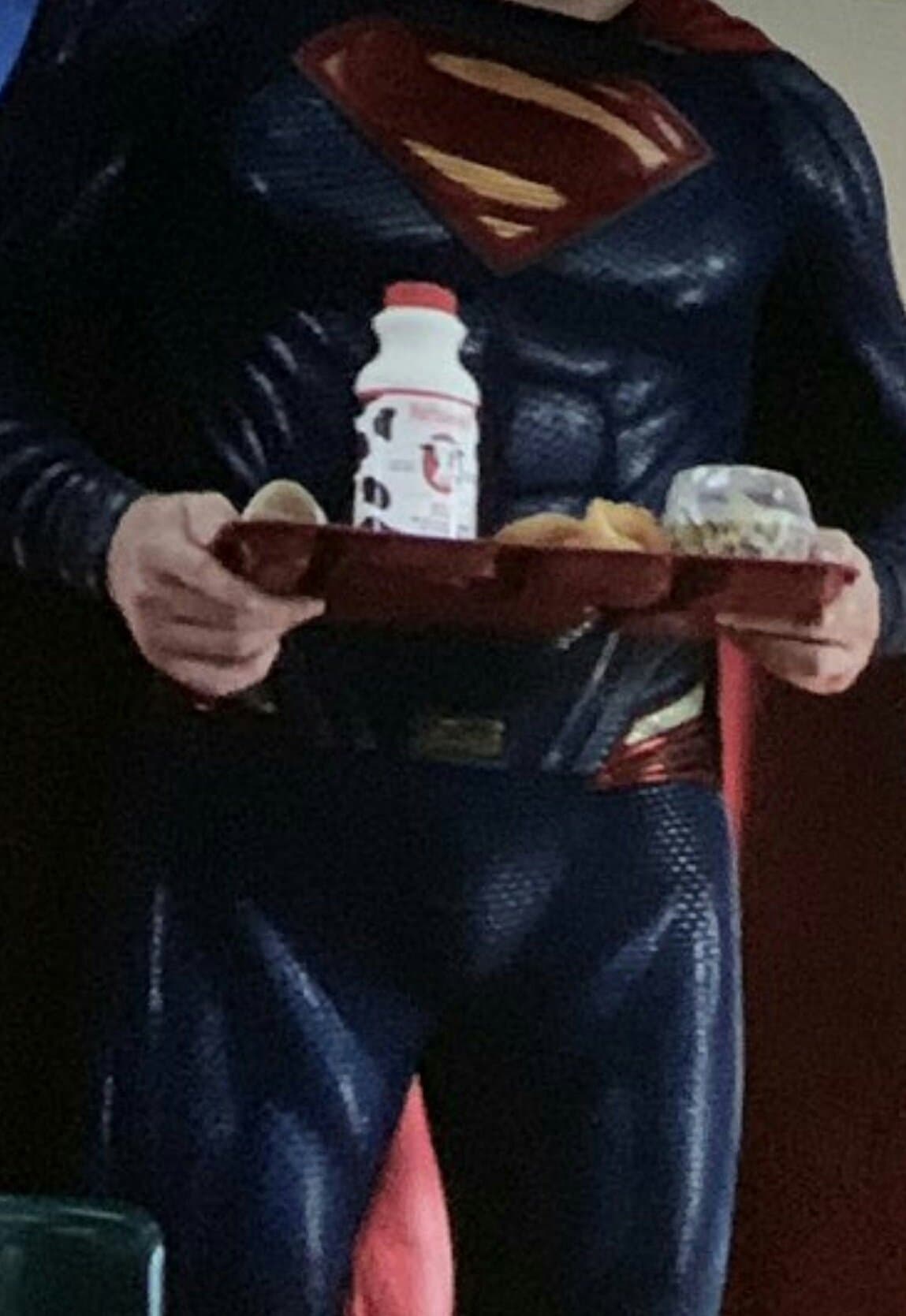
In “Shazam!” (2019), Superman makes a brief appearance, but only his torso and costume are shown, and his face is not visible.
Henry Cavill made a triumphant return as Superman in a post-credit scene in “Black Adam” (2022), setting up a possible confrontation between the two super-powered beings, however Warner Bros. decided to take their superhero films in a different direction, ending Cavill’s time as the Man of Steel.
In “The Flash” (2023), while Cavill’s Superman is absent, we are introduced to a different version of Supergirl (played by Sasha Calle). The film does however utilize CGI to incorporate iconic past portrayals like George Reeves’ black-and-white Superman, Christopher Reeve’s Superman and Helen Slater’s Supergirl, offering a nostalgic glimpse into the character’s rich history within the multiverse. A more substantial sequence saw a CGI-enhanced Nicolas Cage as Superman, rekindling the flames of the unproduced Tim Burton “Superman Lives” project from the early 1990s. These cameos, both familiar and unexpected, serve as potent reminders of Superman’s enduring legacy.
Conclusion
I hope you’ve enjoyed this examination of Superman’s movie history. Throughout the years, Superman’s cinematic legacy remains a testament to the enduring popularity of the Man of Steel and the ongoing efforts to reinterpret his story for new generations.


